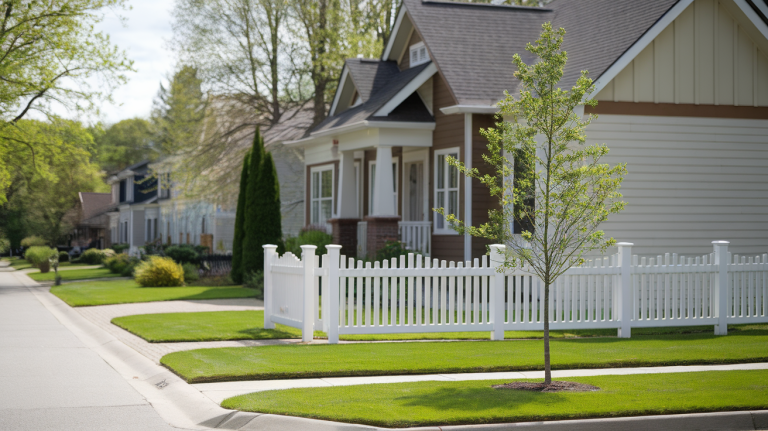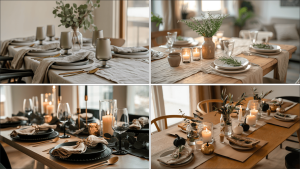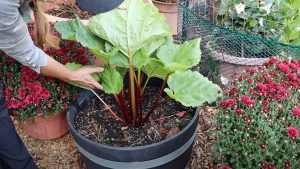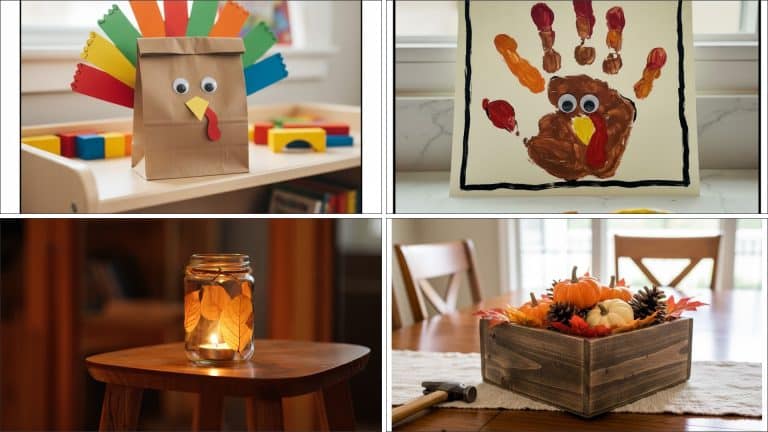You don’t have to be an arborist to get tree placement right. A few simple rules will keep your foundation safe and still get you the shade or privacy you want.
If you’re wondering “where is the best place to plant trees near a home,” start by grabbing a tape measure and a couple of lawn flags. We’ll size the safe zone based on the tree’s mature height and what’s around it.
Step outside for a minute feel that late day heat on your west wall, look up at any wires, and notice where water pools after rain.
Short Answer: Plant by Maturing Size
Plant based on the tree’s mature size, not the sapling in your hand. As a rule of thumb, small trees (to 25 feet tall) belong about 8-10 feet from walls (6-8 feet from corners). Medium trees (25-50 feet) need about 15 feet from walls (12 feet from corners).
Large trees (40+ feet) want 20 feet or more, and very large trees (50+ feet oaks, elms) are happiest 30-50 feet away. If that tree’s future canopy would touch your roof, it’s too close.
First Steps: Mark Safe Distances
-
Measure and mark the safe distance by mature size. Look up the tree’s expected height and spread, then use your tape and flags to mark a “do not cross” line from the wall or corner. In under an hour, you’ll see exactly where a trunk can go and which spots are out.
-
Locate utilities above and below. Call 811 before you dig and look for overhead lines. Keep canopies and mature heights outside utility corridors. Within 2-3 business days, your yard will be marked with colored paint and flags so you can finalize placements confidently.
Quick confusion to clear up: people worry roots will “break” a solid foundation. Healthy concrete doesn’t get punctured by roots. Roots exploit existing cracks and, in shrink-swell soils, they can dry the soil enough to cause settling.
The easy cue for homeowners: if the mature canopy can’t touch the house, the roots are unlikely to be a foundation problem.
Safe Distances by Tree Size and Species
Small ornamental trees (Japanese maple, serviceberry, redbud, dogwood, crabapple) are your best choices close to the house. Aim for 8-10 feet off a wall and 6-8 feet off a corner. With careful species selection and pruning, some can sit as close as 5 feet, but that’s a case-by-case decision.
Medium trees (magnolia, smaller maples, hornbeam, some cherries) should sit about 15 feet from walls and 12 feet from corners. If the projected canopy spread is wide, stretch that distance.
Large and very large trees (oaks, elms, sweetgum, sycamore, spruces, big pines) belong 20 feet or more from walls. Many do best 30-50 feet from the house. For broad-crowned oaks and elms, think closer to 50 feet. You’ll keep branches off the roof, gutters cleaner, and soil moisture more stable near the foundation.
Today: 4 Quick Yard Tests for Placement
-
Canopy circle test: Tie a string to a stake that matches the radius of the tree’s future canopy. Sweep a circle at the proposed spot. If that circle hits the house, roof, driveway, or wires, move the spot out.
-
Sun test: Check at noon and again around 5 p.m. Note where the sun beats on walls. That’s where a deciduous shade tree on the south or west can save energy at a safe distance.
-
Water test: After a rain (or a hose test), see where water pools. Don’t plant water hungry species near the foundation or rely on watering trees in winter to compensate. Fix drainage first so you’re not feeding roots where you need dry soil.
-
Wind test: Tie a ribbon to a fence post and watch where strong winter winds come from. Place evergreen windbreaks perpendicular to that path well away from the house so snow and drip don’t pile against walls.
Good sign you’re on track this week: after utilities are marked and your canopy circles are staked, your “yes” zones and “no” zones are obvious on the ground, and you’re not trying to squeeze a big tree into a small space.
Why Distance Matters: Roots, Soil Moisture, and Foundations
Tree roots are built to chase moisture and oxygen. Most of the action is in lateral roots near the surface. They spread as far as the canopy in many species, and sometimes beyond.
They don’t usually punch through intact concrete, but they will travel into existing cracks and can dry out clay soils along a foundation, increasing the risk of settlement. That’s why distance and drainage matter more than anything: keep canopies off the house, maintain even soil moisture near the foundation, and you cut off the two main paths to damage.
Shade, Privacy, and Wind: Where to Plant for Each Goal
To cool the house in summer, plant deciduous shade trees on the south and west so leaves block afternoon sun, but far enough that branches never threaten the roof. In winter, those leaves drop and let the sun warm your walls again.
For privacy, evergreens (arborvitae, holly, juniper) create year-round screening, but palms in the front yard still need the same foundation safe distances as comparable deciduous trees. Don’t cram a hedge within a few feet of siding. Give it room to reach its mature width without pruning it into stress.
For wind, place a row of evergreens upwind (often the north or northwest), set back from the house and spaced so their mature crowns just overlap. Too close and you create snow drifts along the foundation and a constant roof drip. Set them out, and they break the wind before it hits the walls.
Tip for property lines: plant inside your line by at least half the tree’s mature spread so it doesn’t overhang neighbors or require constant cutting.
Too Close to the House: Problems to Avoid and Safer Distances
-
Overhanging branches and clogged gutters: If you can already imagine limbs rubbing shingles, choose a smaller species or move the hole farther out. Pruning can help, but the best fix is placement.
-
Wet foundations: If downspouts dump against the wall, extend them before planting. Roots love that moisture, your foundation doesn’t.
-
Aggressive rooters: Willows, poplars, cottonwoods, silver maples, and river birch have thirsty, seeking roots. Keep them well away from foundations, driveways, and septic fields.
-
Hardscape heave: Sidewalks and driveways near trunks get lifted over time. Keep small trees 6-10 feet away from hardscape. Medium to large trees 10-20+ feet.
You’ll know your planting is working within 10-14 days if the new tree stands upright without re-staking, the soil ring holds moisture without ponding at the foundation, and leaves look firm through midday (not droopy or scorched).
It Depends: Corners, Soil Type, and Canopy Rules
-
Corners vs. walls: Corners allow a tad closer planting because there’s more open space. Use the smaller corner distances above.
-
Soil type: In regions with heavy clay and big swings between wet and dry, add a few extra feet for large species. Even spacing is risk reduction.
-
Roots vs. canopy: As a practical homeowner guideline, if your future canopy won’t touch the house, roots are unlikely to be a foundation threat, especially with good drainage.
Final Thoughts
Whether you DIY or call us, the goal is the same: a tree that thrives without creating future problems.
If you’d like a hand, we can walk your site, measure clearances, check utilities, and map mature canopies before you dig. We also plant with proper depth and staking, ensuring a healthy start.
Most visits are scheduled within a week, and either way, you end up with a clear, long-term plan.













